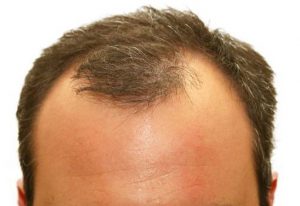
Coping with a receding hairline can be challenging, especially if you’re relatively young. In our society, hair holds significant value, and individuals experiencing hair loss before the age of 30 may encounter teasing or self-esteem issues. Fortunately, there are various receding hairline treatment options available that can effectively slow down or even halt this distressing problem.
Determining the most suitable treatment for your needs may require some research, but it’s a worthwhile endeavor. Here, we’ll outline some of the most effective receding hairline treatment choices and provide insights into the reasons behind hairline recession.
Why Do I Have a Receding Hairline?
While we may sometimes playfully blame our parents for various life traits, receding hairlines are a genetic issue for which genetics are the key culprit. In the majority of cases, it results from a hormone found in men known as dihydrotestosterone, or DHT. Our follicles’ sensitivity to DHT tends to manifest predominantly in the top, crown, and front of the scalp, leading to what’s commonly referred to as male pattern baldness.
Contrary to popular belief, the notion that baldness is inherited exclusively through the mother’s side of the family is not accurate. In reality, either parent can pass on the genes associated with hair loss. However, recent studies suggest that genes inherited from the maternal side of the family may play a slightly more influential role in determining baldness.
How Does DHT Affect Hair?
DHT (dihydrotestosterone) is produced when the enzyme 5-alpha reductase interacts with testosterone. Once formed, DHT starts to impact hair follicles by reducing the anagen, or growth, phase of the hair cycle. This results in smaller hair follicles, leading to the production of shorter, finer hair. Ultimately, the hair follicle ceases to generate hair altogether.
The Norwood Classification of Male Pattern Baldness
Introduced by Dr. O’tar Norwood in 1975, the Norwood Classification for baldness (refer to the image above) delineates two primary types of male pattern baldness, along with several less common variants. In the typical pattern, Norwood identifies two zones of hair loss: the thinning crown and the bitemporal recession. These areas progressively expand over time until the top, crown, and frontal regions of the head become completely devoid of hair.
The primary classification comprises seven distinct classes:
- Class I: An adolescent hairline with no signs of balding, located near the upper brow crease.
- Class II: A mature hairline situated approximately 1.5cm above the upper brow crease. Some temporal recession may be present, but no actual balding has occurred.
- Class III: The initial stage of hair loss, characterized by enlarged temporal recession.
- Class IV: Further hair loss in the frontal and vertex areas, although some hair still separates these two regions.
- Class V: Balding continues to progress in both the vertex and frontal areas, causing the separating hair to diminish.
- Class VI: The hair that once separated the frontal and vertex areas has vanished, creating a single extensive bald region. Hair density on the sides, however, remains relatively intact.
- Class VII: Marked by extensive hair loss, with only a ring of hair remaining on the back and sides.
The Norwood Class A Classification
In the Class A classification, hair loss progresses exclusively from the front to the back, with no balding at the vertex (crown). This pattern is relatively rare, affecting less than ten percent of men experiencing balding. Despite the minimal actual recession of the hairline, the frontal hair loss can appear more pronounced and dramatic. Many individuals falling into the Class A category often seek effective treatments to address their receding hairlines.
Other Classifications
There are several other forms of genetic hair loss, including diffuse patterned alopecia and diffuse unpatterned alopecia classifications. In the former, the entire scalp experiences gradual thinning without following the typical Norwood stages. In the latter, the thinning occurs relatively rapidly, affecting not only the top and front of the scalp but also the sides.
Receding Hairline Treatment Options
Numerous treatments exist for addressing receding hairlines. In the realm of medications, there are two primary options available: Propecia (an oral medication) and Rogaine (a topical medication). Additionally, some other medications, such as Avodart and Aldactone, are commonly employed for receding hairlines, despite their original purposes lying elsewhere.
Certain individuals opt for Low-Level Laser Therapy to stimulate follicle growth or consider hair transplants. Herbal receding hairline treatment alternatives are also accessible at a more affordable cost and with less effort involved. To explore potential savings in Manchester and London, take advantage of our free consultation and rejuvenate your youthful appearance in 2023.
What is the solution to receding hairline and thinning hair?
When it comes to addressing a receding hairline, you have a range of treatment options to consider. Among these, FUE hair transplants shine as a painless, cost-effective, and enduring solution for addressing issues like bald patches, thinning hair, and receding hairlines. FUE, or Follicular Unit Extraction, entails the extraction of individual hair follicles from the donor area, followed by their transplantation to the recipient area, resulting in the growth of natural-looking hair. This minimally invasive procedure delivers permanent results without leaving any linear scars.
Budapest, Hungary, has emerged as a compelling choice for those exploring hair loss surgery abroad. The city boasts exceptional medical facilities, skilled surgeons, and competitive prices. Opting for Budapest for an FUE hair transplant ensures not only top-quality treatment but also an enjoyable experience, with the city’s rich culture, stunning attractions, and renowned thermal baths offering post-operative relaxation opportunities.